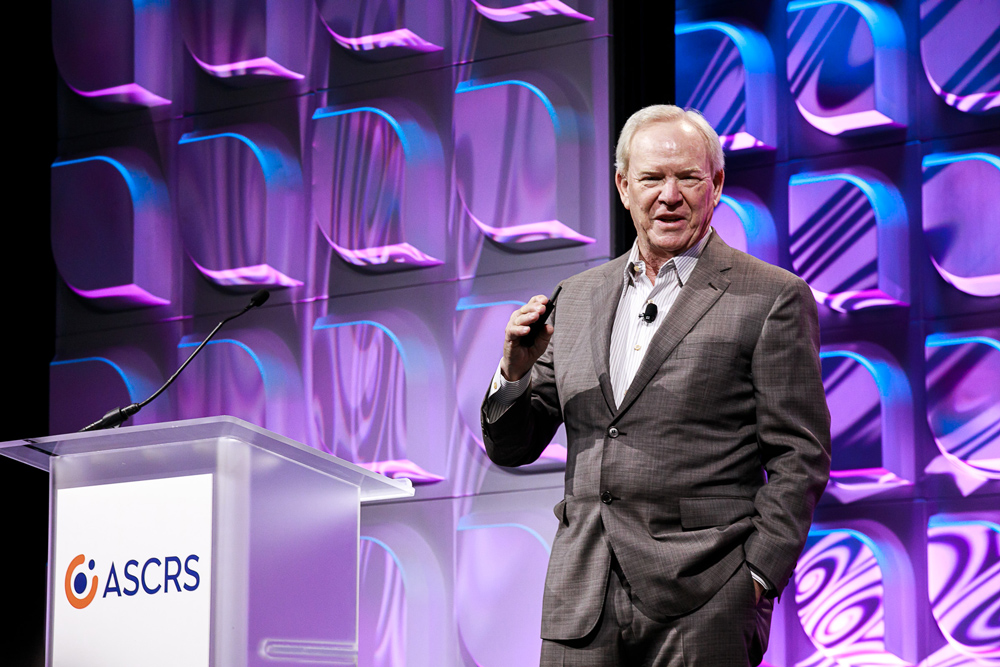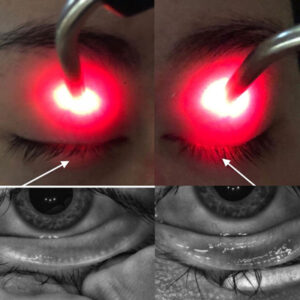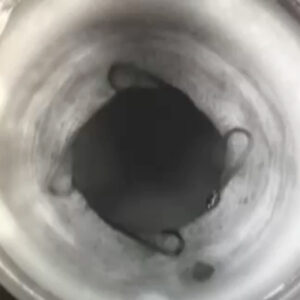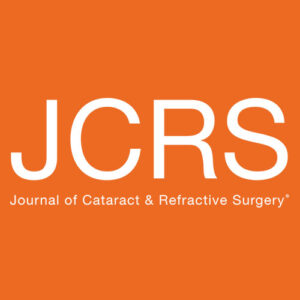ASCRS News
July 2023
by Liz Hillman
Editorial Co-Director
Monday on the Main Stage at the 2023 ASCRS Annual Meeting featured the Charles D. Kelman, MD, Innovator’s Lecture, delivered by William Link, PhD, and several other presentations that focused on either recent or up-and-coming innovations.
Innovator’s Lecture
“What an honor to have the opportunity to receive this award,” Dr. Link said. “Charles Kelman had a real impact on my life. I learned a lot from him.”
Innovation is special in the field of ophthalmology, Dr. Link said. Vision is valued, and even with decades of innovation and commitment, worldwide there are still immense unmet needs. Innovation has been rewarded in the field of ophthalmology, which is precious because, as Dr. Link said, “resources come to areas where they’re rewarded.” The market—patients, providers, investors, entrepreneurs, and strategic leaders—is receptive to innovation in ophthalmology.

Source: ASCRS
The ecosystem for innovation is well-established in this area of medicine, Dr. Link continued, noting that he’s been involved in ophthalmic innovation for 4 decades. He served as the president and founder of American Medical Optics beginning in 1978; this company was then sold to Allergan in 1986, spun out as Advanced Medical Optics in 2002, was acquired by Abbott in 2009, then was acquired by Johnson & Johnson Vision in 2017. He was the CEO and founder of Chiron Vision in 1988, which was later sold to Bausch + Lomb in 1998. He also led one of the first venture capital firms with a strong focus on ophthalmology, Versant Ventures, and founded Flying L partners in 2016. Dr. Link has founded or invested in 28 companies in ophthalmology and helped create new market categories.
Dr. Kelman, upon meeting Dr. Link in 1978, asked if Dr. Link would help him make an IOL. This would eventually lead to the Kelman Tri-pod lens in 1979.
“Through the decades, not only did we have a lot of personal and professional interaction, but he welcomed me and my family into his family,” Dr. Link said. Later in his presentation, he said that for innovation, the power of relationships matters.
Dr. Link shared a story about himself and Dr. Kelman. While on the golf course, they started talking about ideas. After the game, they took Dr. Kelman’s helicopter to his Manhattan practice, and while on the walk there, they made a call to his patent attorney. After seeing a few patients in his office, he had a fax of a draft patent. He provided his edits, faxed it back, and returned to seeing patients. By the end of that same day, Dr. Kelman had a filed patent.
“He had resources that were so responsive and knowledgeable around him. He didn’t want to think about it and noodle on it. He took action. That was wonderful learning,” Dr. Link said.
Dr. Link shared his key characteristics of innovation:
- Character counts
- Take initiative (when it doubt, give it a try)
- Good manners and high integrity
- Build trust relationships
- Hire great people, inspire, and empower them
- Be a great communicator
- Listen more than you talk
- Hard work pays off
- Take calculated risks
- Don’t take yourself too seriously
“Remember, innovation is powered by courage, courage to fail, courage to try things,” Dr. Link said. “[It is] powered by determination. … [And] if we’re willing to let others share the credit for innovation, it’s more powerful. So humility amplifies the impact of innovation.”
Other presentations
Leading the other presentations in this Main Stage session was Sergio Canabrava, MD. He described the iterations of the double-flanged polypropylene technique for multiples uses in ophthalmology.
Shin Yamane, MD, PhD, described the double-needle flanged scleral suture IOL fixation technique in 2016, taking home the grand prize at the ASCRS Film Festival that year. In 2017, Dr. Canabrava presented on the double-flanged technique for the first time with a transscleral bag fixation at the ASCRS Film Festival. Since 2019, he said many surgeons have used his technique with double-flanged polypropylene.
Dr. Canabrava gave his five main principles for this technique: 1) Mark 2 mm from the limbus, 2) make a long scleral tunnel, 3) hold the base of the Prolene with tension, 4) use the correct flange size, and 5) bury the knot.
Next, Mark Lobanoff, MD, described striving for perfection in LASIK and the impact of Phorcides software. He said that the software was created for topography-guided ablations that could correct aberrations on the cornea.
“One of the things we recognized was that higher order aberrations matter to visual acuity,” he said.
When topography-guided LASIK was first approved, Dr. Lobanoff said the trials showed 88% of eyes could see 20/20 or better and 59% 20/15 or better. Surgeons were told to treat based off of the patient’s manifest refraction, but eventually they started finding out that their results were not as good as the FDA studies. Why? Dr. Lobanoff said the FDA trial was primarily for safety and only included “nearly perfect” corneas. When topographic elevations are that small, it is the same as the measured anterior corneal astigmatism, he said. When elevations are higher, the manifest astigmatism is not equal to the cornea.
Working with geographic imaging software, Dr. Lobanoff described the work that was done to create Phorcides, which is software designed to assist with calculations for Contoura LASIK (Alcon) treatments. According to Dr. Lobanoff, with Phorcides, 100% of eyes saw 20/20 or better postop, with equal efficacy seen in low and high myopic treatments. Another study he described shared that binocularly 100% of eyes could see 20/15 or better.
Richard Lewis, MD, spoke about an innovation that will improve visualization of the angle. Imaging the angle, Dr. Lewis said, has been a challenge for MIGS. He described the ViaLuxe Laser System (ViaLase) as a new approach to gonioscopic imaging and femtosecond pathways. The gonioscope views the trabecular meshwork at the same angle as the system’s femtosecond laser, for high-resolution gonioscopy with 12 microns of clarity and OCT imaging with 2 microns of cross-sectional precision, he said.
Dr. Lewis said the system performs FLigHT (femtosecond laser image-guided high-precision trabeculotomy) procedures. The durability of the treatment at 24 months shows that the sclerostomy is patent, and OCT confirms it hasn’t regrown or scarred down, he said. In the study, there were no serious adverse events, and the mean IOP reduction was 34.5% with a more than 80% responder rate. While the system currently uses a femtosecond laser for trabeculotomies, Dr. Lewis said he thinks there are a variety of different ways the imaging could be used.
In his presentation, Forrest Ellis, MD, described the range of features that a truly accommodating IOL would need to have and research that shows that most accommodation occurs on the anterior surface of the crystalline lens. The flatter the surface, the greater the dioptric power change with diameter change, he said.
He described the JelliSee Accommodating IOL (JelliSee Ophthalmics), which is an accommodated IOL that disaccommodates. It has elasticity built in and does not rely on retained capsular elasticity. He said this fluid-filled lens has a flexible but firm anterior surface. Actuators along the circumference of the IOL apply radial outward force to the anterior surface, mimicking zonule forces, and a relatively flat anterior surface mimics non-linear dioptric power change.
In primates, Dr. Ellis said 7 D of accommodation has been demonstrated with the lens at 1 year postop. An in-human study is currently being conducted. A human patient who has received the lens could see 20/16 at distance and 20/25 at ultra-near (20 cm) at 1 day postop, and another could see 20/25 uncorrected at distance, near, and ultra-near 6 months postop, Dr. Ellis said.
The last presenter ahead of the Innovator’s Lecture was Elizabeth Yeu, MD, speaking about a “paradigm shift in lens extraction and cataract surgery.” She described the MiCOR 700 (Carl Zeiss Meditec), which uses a no thermal energy, no ultrasound, and no cavitation approach to lens removal. According to Dr. Yeu’s slides, this handheld, disposable device takes scrub nurses less time to set up. She said it maintains chamber stability with minimal fluid through the eye, and it uses agitation not emulsification to dissolve the cataract.
In addition to its small footprint and time savings that could be attractive for domestic ORs, Dr. Yeu said this system is “primed to be taken out for global outreach.” When asked by the panel about the effect on endothelial cells, Dr. Yeu said studies are being done to compare the performance and outcomes of cataract surgeries with the MiCOR 700 and traditional advanced phaco technologies now.
About the physicians
Sergio Canabrava, MD
Clinical Coordinator and Director
Med Aula
Belo Horizonte, Brazil
Forrest Ellis, MD
Northern Virginia Ophthalmology Associates
Founder/CEO
JelliSee Ophthalmics
Fairfax, Virginia
Richard Lewis, MD
Sacramento Eye Consultants
Sacramento, California
William Link, PhD
Managing Partner Flying L Partners
Co-Founder
Versant Ventures
Newport Beach, California
Mark Lobanoff, MD
OVO LASIK + Lens
Founder/CEO
Phorcides
Minneapolis, Minnesota
Elizabeth Yeu, MD
Virginia Eye Consultants
Norfolk, Virginia
Relevant disclosures
Canabrava: None
Ellis: JelliSee Ophthalmics
Lewis: ViaLase
Link: AEYE, Aurion Biotech, CorneaGen, LENSAR, Osanni Bio, RxSight, Surface Pharma, Tarsus Pharmaceuticals, TearClear, ViaLase
Lobanoff: Phorcides
Yeu: Carl Zeiss Meditec
Contact
Canabrava: sergiocanabrava@hotmail.com
Ellis: Jim@JelliSee.com
Lewis: rlewis@saceye.com
Link: bill@williamjlink.com
Lobanoff: mlobanoff@gmail.com
Yeu: eyeulin@gmail.com



